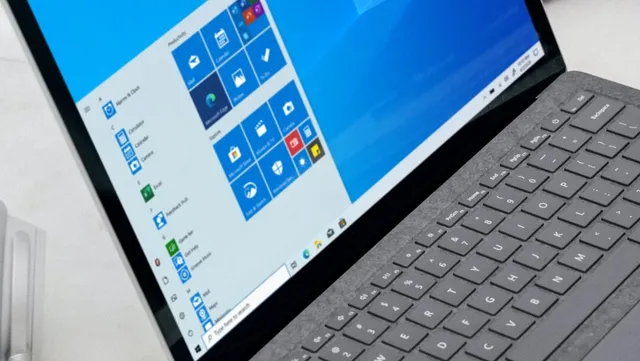Table of Contents
Microsoft Office and Accessibility – Empowering Inclusivity in Canadian Workplaces
In today’s diverse workforce, accessibility and inclusivity are crucial for creating a productive and supportive work environment. Buy MS Office has taken significant strides in promoting accessibility, making it easier for people with disabilities to use Office applications effectively. In this article, we will explore how Microsoft Office is empowering inclusivity in Canadian workplaces and providing equal opportunities for all employees.
1. Accessibility Features in Microsoft Office
Microsoft Office incorporates a range of accessibility features to support users with diverse needs. For example, the “Accessibility Checker” in Word, Excel, and PowerPoint scans documents for potential accessibility issues and offers suggestions to improve readability. The applications also provide options for adjusting text size, font styles, and contrast, making it easier for individuals with visual impairments to read and comprehend documents. Additionally, Office applications are compatible with screen readers, ensuring that people with visual impairments can access and interact with the content effectively.
2. Microsoft Office for Dyslexia and Learning Differences
Microsoft Office includes features specifically designed to support individuals with dyslexia and other learning differences. The “Immersive Reader” in Word, OneNote, and Outlook simplifies text by breaking it into syllables, highlighting each word, and adjusting background colors for enhanced readability. This feature assists individuals with reading difficulties in understanding and processing written content more effectively. Moreover, “Dictate” allows users to speak instead of type, providing an alternative method for creating written content, which can be beneficial for those with dyslexia or motor impairments.
3. Enabling Communication with Microsoft Teams
Microsoft Teams, an integral part of Microsoft Office 365, is a powerful platform for communication and collaboration in the workplace. Teams has built-in accessibility features, such as live captions and subtitles during meetings and video calls, making virtual communication more inclusive for individuals with hearing impairments. Real-time transcription and translation capabilities further enhance accessibility and facilitate effective communication among team members with different language preferences.
4. Inclusive Design and Usability
Inclusive design is at the heart of Microsoft Office’s development process. Microsoft takes a user-centric approach, involving individuals with disabilities in the design and testing phases to ensure that Office applications are accessible to all users. The commitment to inclusive design extends to Office templates and themes, which are designed with accessibility in mind, offering options for high contrast and larger fonts to accommodate various needs.
Microsoft Office and Cognitive Accessibility
Microsoft Office’s efforts to promote cognitive accessibility are a significant step towards supporting employees with cognitive disabilities and cognitive diversity.
1. Focus Mode in Word
For individuals with attention difficulties or cognitive challenges, staying focused while reading or writing can be challenging. Focus Mode in Word minimizes distractions by removing toolbars and menus, allowing users to concentrate solely on the content. This feature enhances productivity and supports a more focused reading and writing experience.
2. Simplified Ribbon in Office Applications
The Ribbon interface in Office applications has been redesigned to enhance cognitive accessibility. The Simplified Ribbon provides a more straightforward and streamlined user interface, reducing cognitive load and making it easier for users to find and use essential features.
3. Customizable User Interface
Recognizing that different individuals have unique cognitive needs and preferences, Microsoft Office offers customizable user interfaces. Users can personalize the appearance and layout of Office applications, arranging features and tools to suit their individual workflows. This customization empowers employees to create a workspace that aligns with their cognitive abilities, ultimately enhancing their overall productivity and user experience.
Microsoft Office and Mobility Accessibility
Supporting mobility accessibility is another vital aspect of Microsoft Office’s commitment to inclusivity.
1. Office Mobile Apps
Microsoft Office’s mobile applications, such as Word, Excel, and PowerPoint, are optimized for touchscreens and mobile devices. These mobile apps offer an intuitive and user-friendly interface, making it easier for individuals with mobility impairments to interact with Office content on smartphones and tablets. The responsive design allows users to navigate and edit documents effortlessly, promoting accessibility on the go.
2. Voice Commands and Dictation
Voice commands and dictation functionalities in Office applications offer a valuable alternative for individuals with limited mobility or dexterity. With voice commands, users can navigate menus, format text, and perform various tasks using voice prompts. Dictation, as mentioned earlier, enables users to create written content by speaking, reducing the need for manual typing and enabling individuals with mobility challenges to engage with Office applications efficiently.
3. Digital Inking and Touch Gestures
Microsoft Office’s support for digital inking and touch gestures fosters accessibility for individuals who may find it easier to interact with content using a stylus or touchscreen. Digital inking allows users to write, draw, and annotate directly on documents, while touch gestures offer fluid navigation and interaction with Office applications, making it accessible for people with limited mobility or those who prefer tactile interactions.
Conclusion – Empowering All Users
Microsoft Office’s commitment to accessibility underscores its dedication to empowering all users, regardless of their abilities or disabilities. By integrating inclusive design principles, cognitive accessibility features, mobility-friendly functionalities, and inclusive communication tools, Microsoft Office is fostering an inclusive and supportive work environment in Canadian workplaces. The strides made by Microsoft Office in promoting accessibility demonstrate the transformative impact that technology can have in creating a more inclusive and diverse workforce in Canada.





Wow, incredible blog structure! How long have you ever
been blogging for? you make blogging look easy. The entire look of your web site is fantastic, let alone the content!
You can see similar here najlepszy sklep